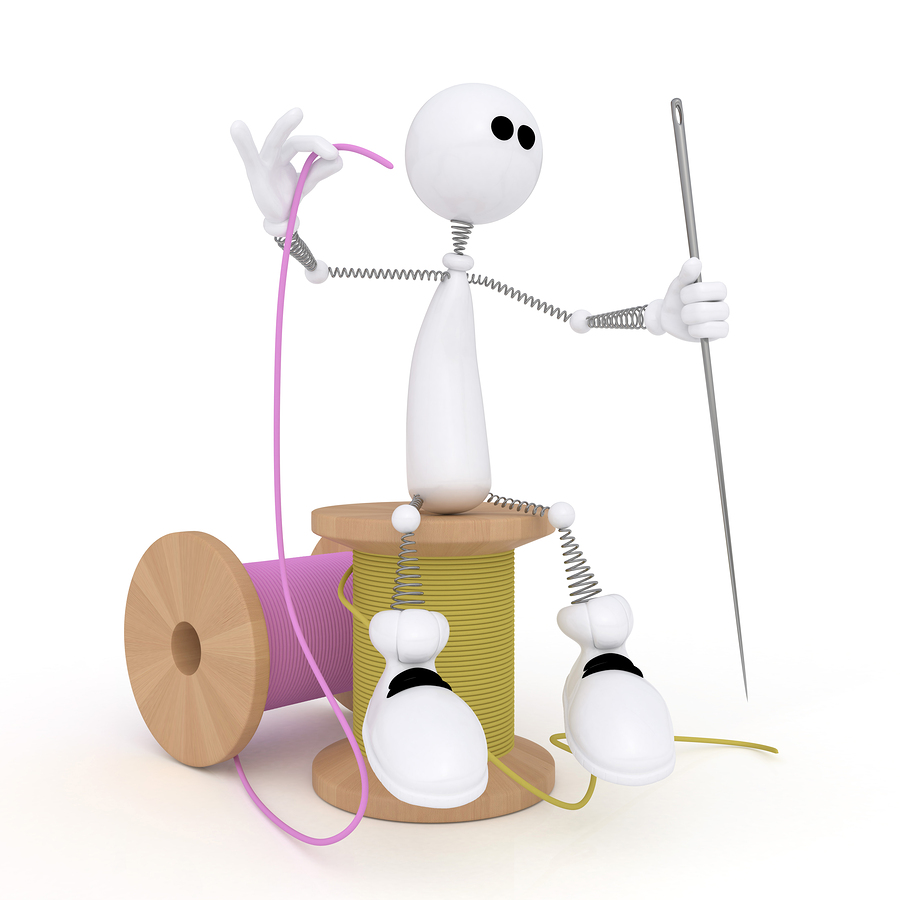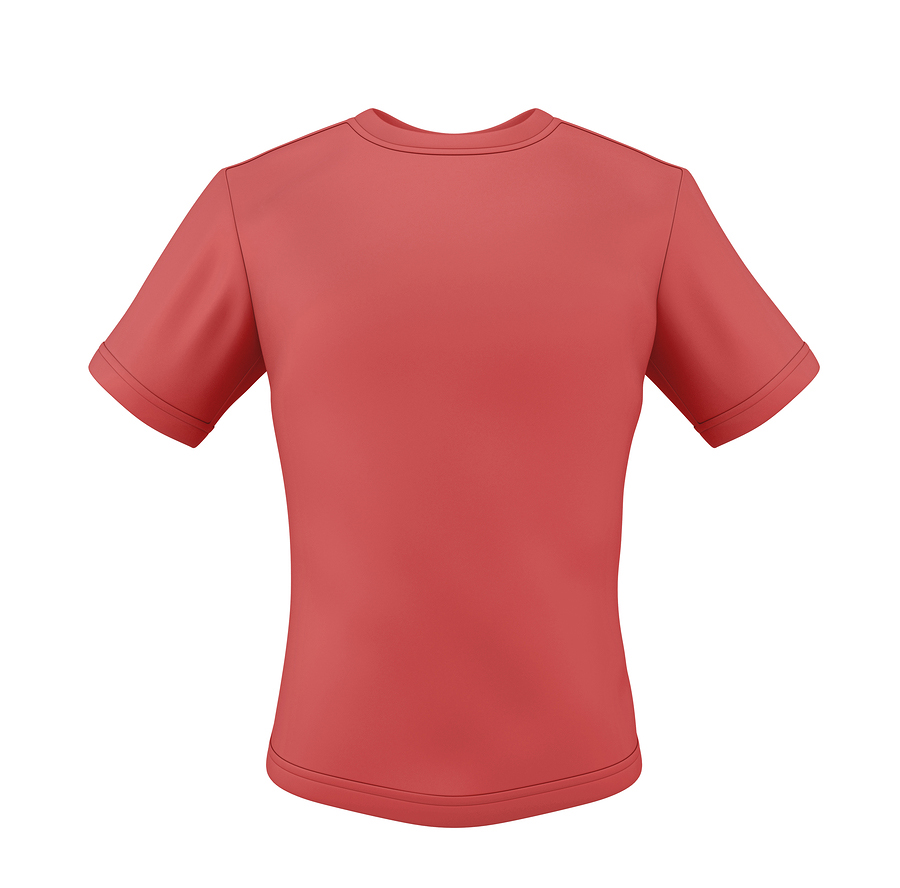Phew – you made it through the holidays, almost, and the chaos that often seems to follow. Way to go! As 2016 unfolds in front of us, there is much to do and much to master. And more importantly, there are numerous new opportunities on the horizon.
One way to make the most of the opportunities that come your way this year is to become highly proficient in understanding what good (or great) art for embroidery looks like. Here is a truth that you need to acknowledge – not all designs can be embroidered, at least not in the exact same form. Your embroidery professional is limited by at least three components when decorating apparel and products for your customers.
1) Thread. Embroidery thread has a width that is far greater than a dot of ink. Creating a single stitch requires more space than you would imagine! To form a stitch, the thread has to cover the distance from point A to point B. If the logo you want to embroider has a very fine line or details or tiny lettering, the spaces between point A and point B are not far enough apart for the stitches to be created.
 Next thing to consider is the differences between the color spectrums available in ink and in thread. When colors are created with ink, the range of possible colors is nearly endless, depending on the technology being used and the surface on to which the ink is being applied. In the land of embroidery, there are several hundred thread colors available. Your embroidery professional will find a thread that matches nearly all of the time. Occasionally there are situations where we have to use a thread that is not a perfect match. Your embroidery provider will let you know when he or she feels that the thread choice requires customer approval.
Next thing to consider is the differences between the color spectrums available in ink and in thread. When colors are created with ink, the range of possible colors is nearly endless, depending on the technology being used and the surface on to which the ink is being applied. In the land of embroidery, there are several hundred thread colors available. Your embroidery professional will find a thread that matches nearly all of the time. Occasionally there are situations where we have to use a thread that is not a perfect match. Your embroidery provider will let you know when he or she feels that the thread choice requires customer approval.
2) Fabric. We then must consider the fabric that the product it is made out of. Some fabrics, like twills and denims, provide an excellent surface for embroidery because they are tightly woven. There is no texture on the surface. These fabrics have a thickness that provides stability to the stitches. Embroidery professionals can create designs with smaller stitches, smaller lettering and intricate details on these tightly woven fabrics. Stabilizers or backings are used on these fabrics to help neutralize the bias of the woven fabric, keeping the fabric from rippling or puckering during the embroidery process.
 On the opposite side of the spectrum, knit fabrics, such as performance fabrics, fleece, polar fleece and sweaters present a wide variety of challenges for your embroidery professional. These fabrics are much softer, much more fluid. As the fabric is being embroidered, it can and often does move as the presser foot of the embroidery machine comes down to form each stitch. There is a great deal more open space between the fibers of the material. And a stitch cannot be formed in air! For a stitch to form, the beginning point A and the ending point B of the stitch must be separated by something or they just turn into a knot, not an actual stitch.
On the opposite side of the spectrum, knit fabrics, such as performance fabrics, fleece, polar fleece and sweaters present a wide variety of challenges for your embroidery professional. These fabrics are much softer, much more fluid. As the fabric is being embroidered, it can and often does move as the presser foot of the embroidery machine comes down to form each stitch. There is a great deal more open space between the fibers of the material. And a stitch cannot be formed in air! For a stitch to form, the beginning point A and the ending point B of the stitch must be separated by something or they just turn into a knot, not an actual stitch.
With these more pliable fabrics, your embroidery professional has to stabilize the fabric to make the surface more accommodating for embroidery. They will use a stabilizer or backing fabric and they may even need to use some sort of topping material to keep the stitches from sinking down into the fabric.
3) Hoopable area. Finally, your embroidery professional must contend with the product itself, and what parts of the product they can secure onto the embroidery equipment. If there is a seam in the way, or a zipper, or we cannot get it clamped or hooped and controlled while on the embroidery machine, we cannot embroider it. The garment is being moved around at a speed that you cannot even imagine! Commercial embroidery machines are designed to stitch 1000+ stitches per minute. And to create a stitch, the needle goes up and down two times, in two different locations, point A and Point B. The embroidery machine moves the garment every time the needle retracts, going to either the next point A or to point B to complete the formation of the current stitch.
Now that you have a rough understanding of the parameters that your embroidery professional is dealing with, here is how you can ensure that he or she can create the best work for your customers.
 Provide vector file artwork to your embroidery professional instead of pixel-based files. A skilled embroiderer or digitizer will be able to transition that art file from vector file into an embroidery file that will create an embroidery design that best interprets the graphic in threads and fabric. If your embroiderer needs to alter the design a bit, he or she will usually send you a proof that you can share with your customer for approval.
Provide vector file artwork to your embroidery professional instead of pixel-based files. A skilled embroiderer or digitizer will be able to transition that art file from vector file into an embroidery file that will create an embroidery design that best interprets the graphic in threads and fabric. If your embroiderer needs to alter the design a bit, he or she will usually send you a proof that you can share with your customer for approval.
When you receive a proof or a request to approve the art, look at it and share it with your customer. No embroiderer wants to hear that there was something wrong with the design after it's been sewn onto 48 shirts! And no embroiderer wants to work until 3 a.m. to make a deadline because you didn't approve the artwork until 4 p.m. the afternoon before the job is due.
And no discussion about art and embroidery would be complete without mention of the digitizing process. The adage “Garbage in, garbage out” definitely applies with digitizing and the creation of excellent embroidery. Any embroiderer worth his or her threads will want to work with embroidery design files created by competent digitizers. Unless you have operated an embroidery machine, I contend that you are probably not qualified to know what a good embroidery file looks like. You can't simply open it on a computer screen and determine, “Yep, this will sew perfectly.”
If your embroidery professional needs to create a new embroidery design file, he or she is doing you a favor, even when there is a cost associated with it. It is not possible to create good embroidery from a poorly digitized design, period.
To make the most of 2016, connect with and use great embroidery professionals. They will make you look like to a hero to your customers by creating excellent embroidered apparel. They will communicate with you about their concerns, their limits and their needs. They will make the order deadlines. And most importantly, they will make it easy for you to gain more business from your customers. If you do not have an embroidery professional who is hitting all these marks for your business, please reach out to me and I will put you in touch with the embroidery professionals who excel at making your customers happy!
Jennifer Cox is president of the National Network of Embroidery Professionals. NNEP members receive personalized marketing consulting designed specifically for their business. To join NNEP today, visit NNEP.net, email Jennifer at hooper@nnep.net, or call 800-866-7396.